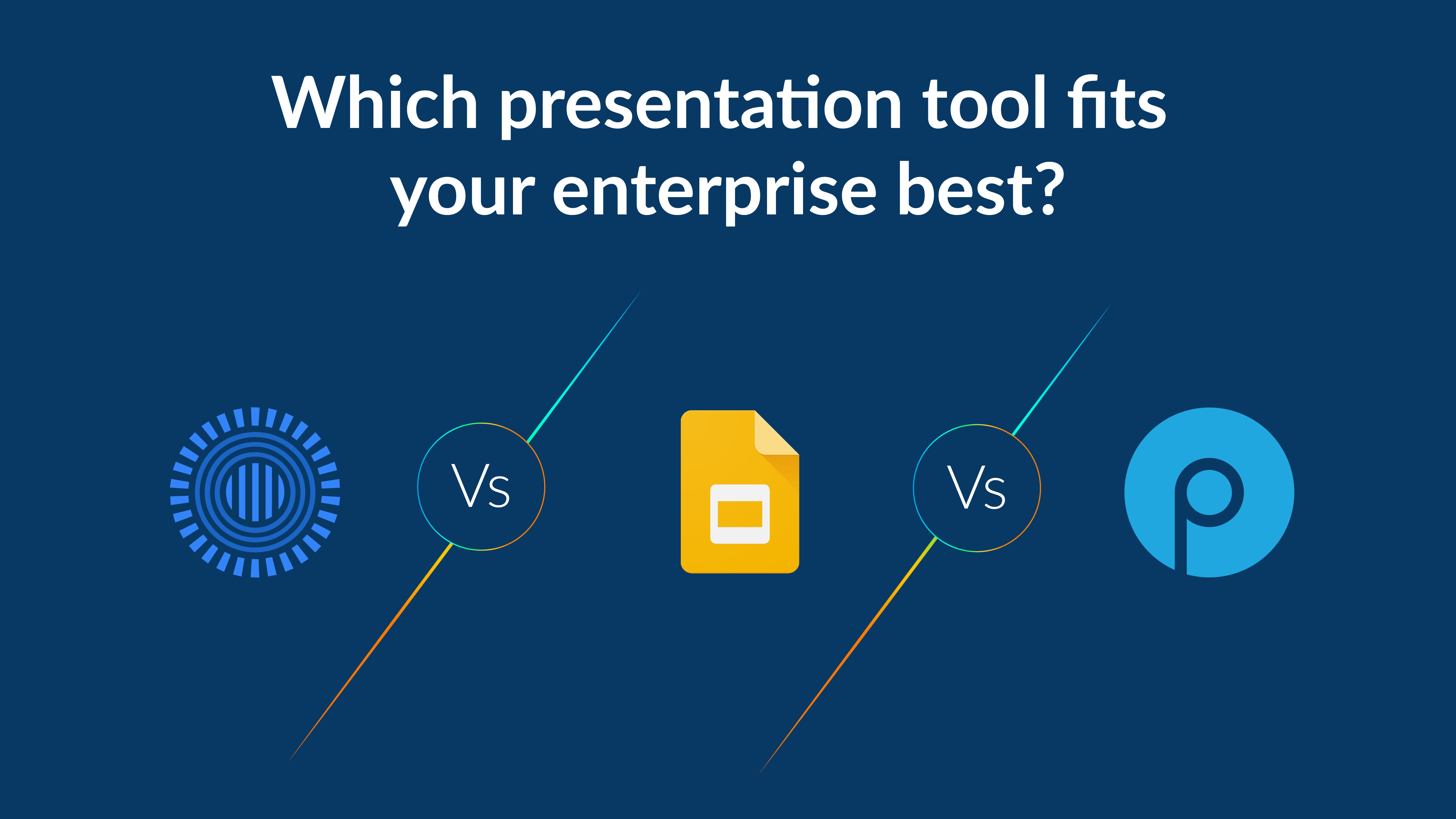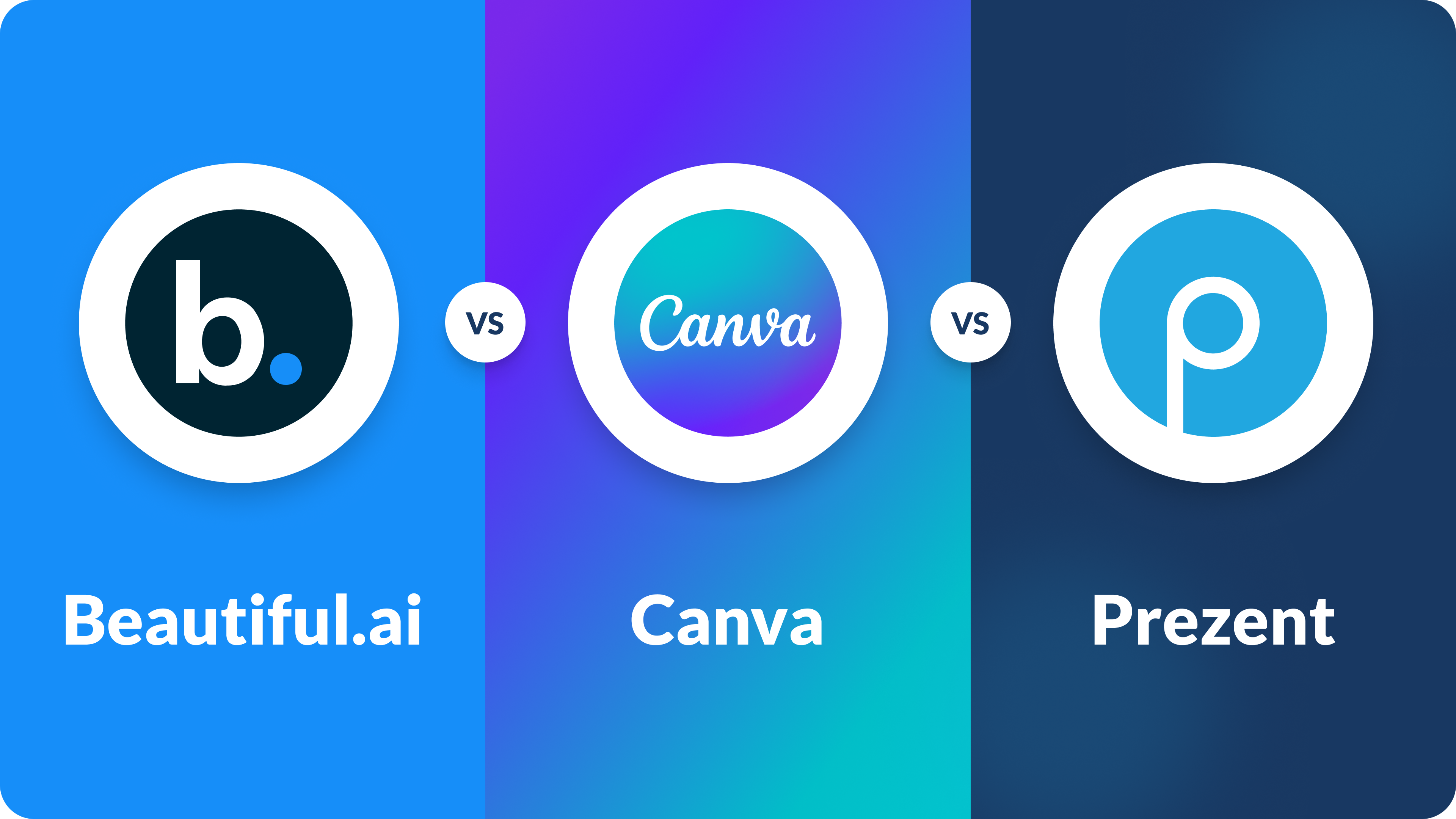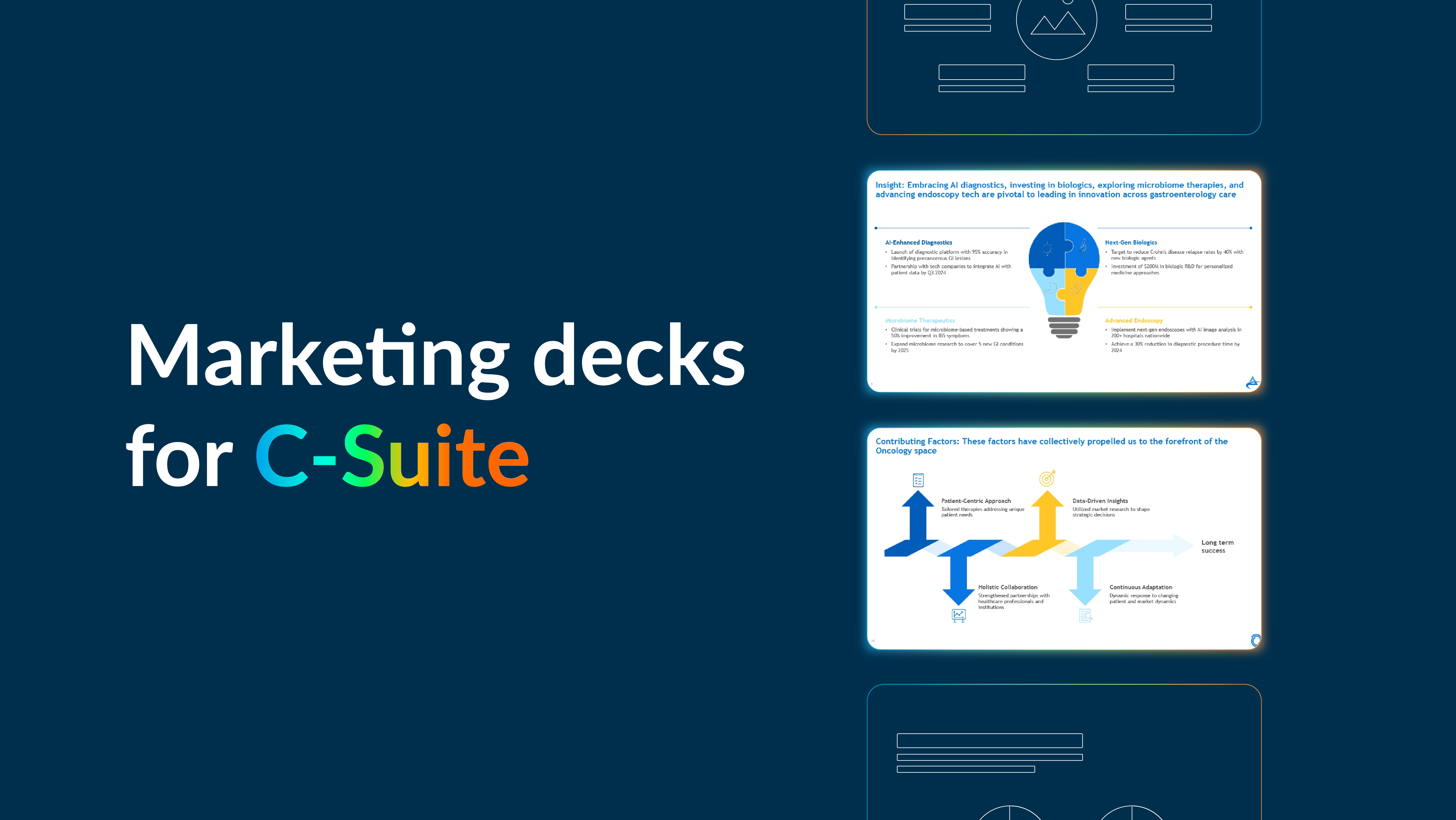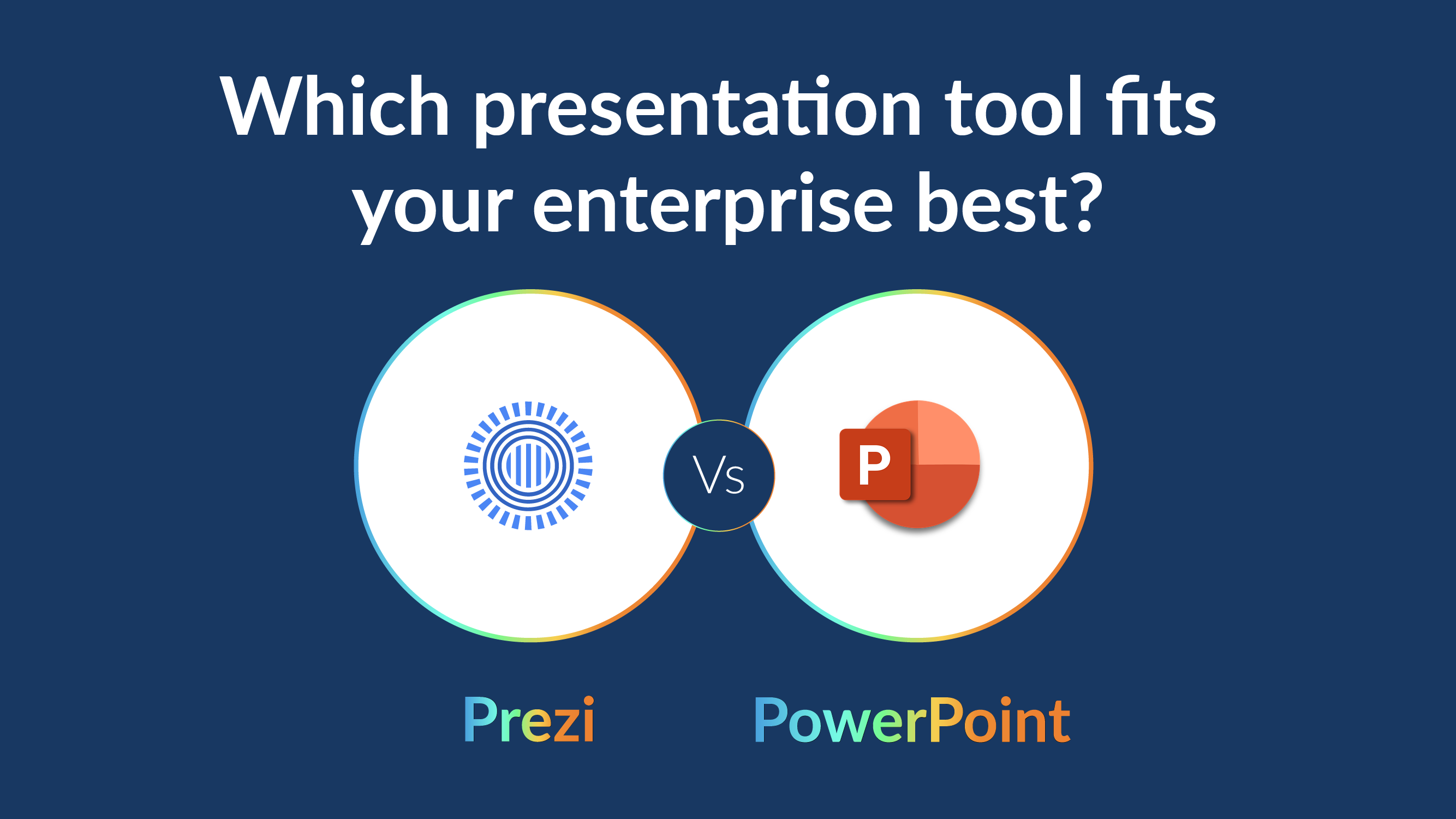Competitor analysis presentation: A comprehensive guide

Hey there!
Welcome to the world of competitor analysis presentations!
In today's business landscape, staying one step ahead of your rivals is crucial. Imagine having the power to dissect your competition and make strategic decisions that could redefine your success. That's precisely what this comprehensive guide on competitor analysis presentations is all about.
What is a competitor analysis?
At its core, a competitor analysis is a strategic tool used by businesses to evaluate and understand their rivals in the market. It's a process that involves gathering and analyzing data to gain insights into the strengths, weaknesses, opportunities, and threats (SWOT) of competitors. With this information, you can fine-tune your business strategy, improve product quality, enhance features, and ultimately, gain a competitive edge.
Benefits of competitor analysis presentation
Why invest your time and resources in creating a competitor analysis presentation?
The answer is simple: it's your roadmap to success. Here are the key benefits:
- Market share: Understanding your competitors' market share helps you identify opportunities for growth.
- Competitive advantage: Discover ways to stand out from the crowd and position your brand effectively.
- Product enhancement: Learn from your competitors' products and services to improve your own.
- Business strategy: Fine-tune your business strategy based on competitors' strengths and weaknesses.
- SEO: Boost your online presence by analyzing competitors' SEO tactics.
How to conduct a competitor analysis
Creating a competitor analysis presentation requires a structured approach. Follow these steps to conduct a thorough analysis:
- Find your SEO competitors: Use the best competitor analysis tools to identify competitor websites that rank for your selected target keywords in Google search.
- Gather data: Collect data on competitors' strengths, weaknesses, products, pricing, and market position.
- Analyze market trends: Stay updated on market trends and understand how competitors fit in.
- Perform SWOT analysis: Perform a SWOT analysis to assess your competitors' strategies.
- Create a competitive analysis report: Compile your findings into a comprehensive report.
KPIs and metrics to add in competitor analysis presentation
To make your competitor analysis presentation truly impactful, include these key performance indicators (KPIs) and metrics:
- Market share: Highlight market share percentages and trends.
- Product quality: Evaluate competitors' product quality and features.
- Stakeholder insights: Showcase stakeholder perspectives on competitors.
- Marketing plan: Analyze competitors' marketing strategies and their effectiveness.
How to structure an effective competitor analysis presentation
Structuring your competitor analysis presentation is paramount to ensure clarity, impact, and audience engagement. Here's a refined framework that not only provides a structured approach but also incorporates key elements from your suggested structure:
Introduction:
Begin with an engaging introduction that sets the stage for your presentation. Introduce your company, your target market, and your estimated market share. This establishes the context and relevance of your analysis. Briefly explain the purpose of your presentation and what your audience should expect to learn.
Competitive landscape:
Dive into the competitive landscape of your industry. Provide an overview that outlines the current state of the industry and its key players. Identify your main competitors and discuss their relative strengths and weaknesses. Use charts, graphs, and visuals to illustrate key trends and insights. This section should help your audience grasp the broader industry context.
SWOT analysis:
Conduct a comprehensive SWOT analysis for both your company and your key competitors. Highlight your company's unique strengths and competitive advantages. Address areas where your company can improve to gain a competitive edge. Be thorough and data-driven in your analysis, supporting your points with evidence and statistics.
Recommendations:
Based on the insights derived from your analysis, provide clear and actionable recommendations for how your company can compete more effectively. These recommendations should stem directly from the SWOT analysis and address areas of improvement. Ensure that your recommendations are specific and feasible, allowing your audience to envision their implementation.
Conclusion:
Summarize the key takeaways from your presentation, reinforcing the main points of your analysis. Re-emphasize the recommendations, making it clear why they are vital for your company's success. Use this section to leave a lasting impression and motivate your audience to take action based on your findings.
Tips for delivering an effective competitor analysis presentation:
To ensure your presentation resonates with your audience, follow these best practices:
- Visual aids: Utilize visuals such as charts, graphs, and infographics to support your points and make the presentation more engaging.
- Clarity and conciseness: Communicate your insights clearly and concisely. Avoid jargon or technical language that may confuse your audience.
- Objective analysis: Maintain objectivity in your analysis. Focus on presenting facts and data rather than making subjective or negative comments about your competitors.
- Audience-centric: Tailor your presentation to your specific audience. Consider their interests and needs to deliver information that is relevant to them.
- Storytelling: Use storytelling techniques to convey information effectively. People often remember and engage with information presented in a narrative format.
- Passion and engagement: Be passionate about your topic, and let your enthusiasm shine through in your delivery. Engage with your audience, encourage questions, and be prepared to provide thoughtful answers.
By incorporating these elements and adhering to best practices, your competitor analysis presentation will not only be structured for success but also deliver the clarity and impact necessary to inform and persuade your audience effectively.
Do’s and don'ts on a competitor analysis presentation
Before you finalize your presentation, consider these do's and don'ts:
Do’s:
- Do your research: Start by conducting thorough research. Gain a deep understanding of your industry, competitors, and target market. This foundation is essential for a compelling presentation.
- Be objective: Maintain objectivity throughout your presentation. Focus on presenting facts and data rather than making negative comments about your competitors. An unbiased approach lends credibility to your analysis.
- Be specific: Avoid vague statements like "we're better than the competition." Instead, explain precisely why your company holds a competitive edge. Use data and evidence to support your claims.
- Use visuals: Visual aids such as charts, graphs, and images can make complex data more digestible. They enhance understanding and engagement, helping your audience grasp key insights more effectively.
- Be prepared to answer questions: Anticipate the questions your audience might have and prepare well-thought-out answers in advance. This readiness demonstrates your expertise and reinforces your presentation's credibility.
Don'ts:
- Avoid information overload: Resist the temptation to overwhelm your audience with excessive information. Focus on presenting the most critical insights and trends. Quality over quantity is key.
- Steer clear of jargon: Keep your language accessible. Avoid using too much industry-specific jargon or technical terms. Your presentation should be understandable without the need for constant reference.
- Don't make it overly salesy: Remember that the primary purpose of a competitor analysis presentation is to inform and persuade, not to sell. While showcasing your strengths is important, avoid coming across as overly promotional.
- Don't skip rehearsal: Practice your presentation thoroughly. Rehearsing allows you to deliver your content confidently and smoothly. It ensures that your key points are communicated effectively and that you can navigate any unexpected questions or challenges.
Summarizing key takeaways
- Competitor analysis is crucial for understanding rivals and gaining a competitive edge.
- Benefits include identifying growth opportunities, improving strategies, and boosting online presence.
- Steps: Identify competitors, gather data, analyze trends, perform SWOT, and create a comprehensive report.
- Include KPIs like market share, product quality, stakeholder insights, and marketing analysis.
- Structure: Introduction, competitive landscape, SWOT analysis, recommendations, and conclusion.
- Tips: Use visuals, clear communication, objectivity, audience focus, storytelling, and passion.
- Do's: Research, objectivity, specificity, visuals, preparedness.
- Don'ts: Overload, jargon, excessive sales focus, lack of rehearsal.
FAQ's
1. What is a competitor analysis presentation, and how can it benefit my business?
A competitor analysis presentation is a strategic tool that helps businesses evaluate their rivals in the market. It involves using a template with 10-35 slides, often in powerpoint, to analyze competitors' strengths, weaknesses, and product features. By presenting this set of slides with name "competitor analysis template," you can customize your analysis, making it relevant to your specific product or service. It's available for immediate download and offers editable slides, making the process efficient and visually engaging.
2. How do I perform a competitor analysis using presentation slides?
To perform a competitor analysis, start by selecting a competitive analysis chart or infographic template from our library. These analysis powerpoint templates contain stages in this process, such as market research, competitor comparison, and competitive intelligence. You can use our competitor analysis template ppt layout and design to create a presentation that highlights various topics discussed in these slides. This helps your business stay ahead in the market.
3. What is the process for creating a competitor analysis presentation?
The process of creating a competitor analysis report presentation typically involves a five or eight-stage process, depending on business growth and the scope of competitors' market presence. You can use a competitor analysis framework as a guide and select from our editable slides and presentation deck. This ensures that you can make this ppt quickly and efficiently, enhancing your analysis-related efforts.
4. How does a competitor analysis presentation help my business stand out in the market?
A well-crafted competitor analysis presentation allows business owners to identify direct competitors and understand how they fit into the market. By using powerpoint presentations with twelve slides, you can comprehensively analyze competitors' pricing, products, and strategies. This analysis helps your business develop a competitive edge and effectively fit in the market.
5. Can I use competitor analysis templates for google slides?
Yes, these competitor analysis presentation templates are not limited to powerpoint; they are compatible with google slides as well. Simply click the download button to get the slides added to your google slides account. This flexibility allows you to fit in the market seamlessly and use the templates for efficient analysis and presentation purposes.
Create your competitor analysis presentation with prezent
Prezent streamlines competitor analysis presentations by offering a vast content repository, ensuring brand consistency, and saving up to 70% of your time. It promotes collaboration with real-time sharing and provides access to brand-approved designs for a visually appealing presentation. Additionally, Prezent's overnight service ensures timely delivery, making it a valuable tool for creating effective competitor analysis presentations efficiently.
Competitor analysis presentations are not just about data; they are about unlocking your potential for success. As you delve into the world of analyzing your rivals, remember that knowledge is power. Use the insights you gain to propel your business forward, and let Prezent be your trusted partner in this journey.
So, are you ready to create a competitor analysis presentation that stands out in the market?
Let's get started with Prezent try our free trial or book a demo today!



.avif)








